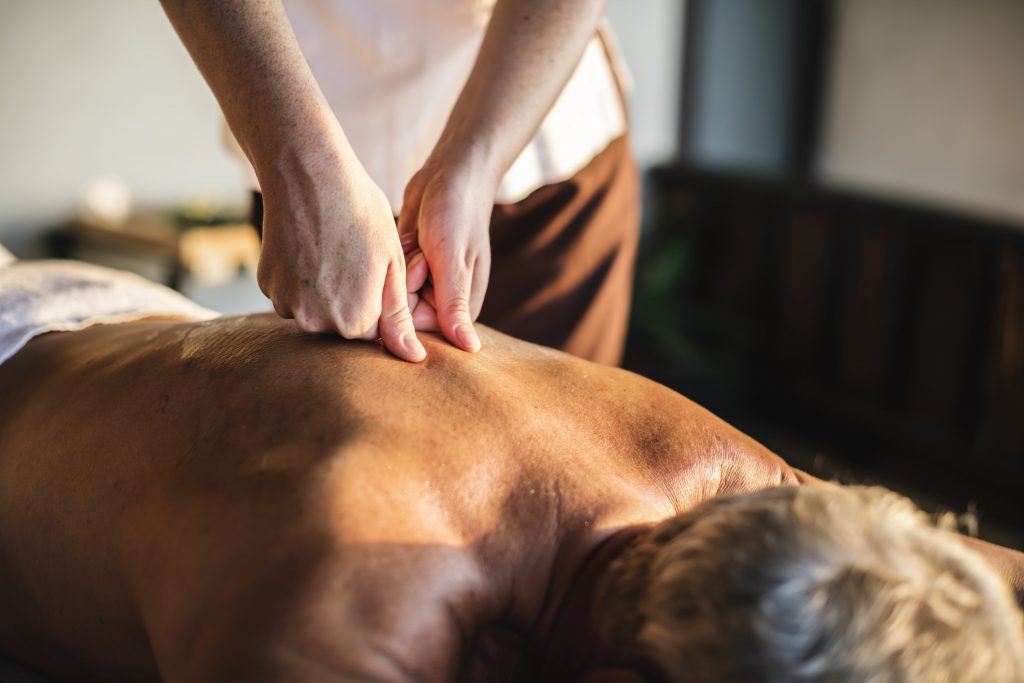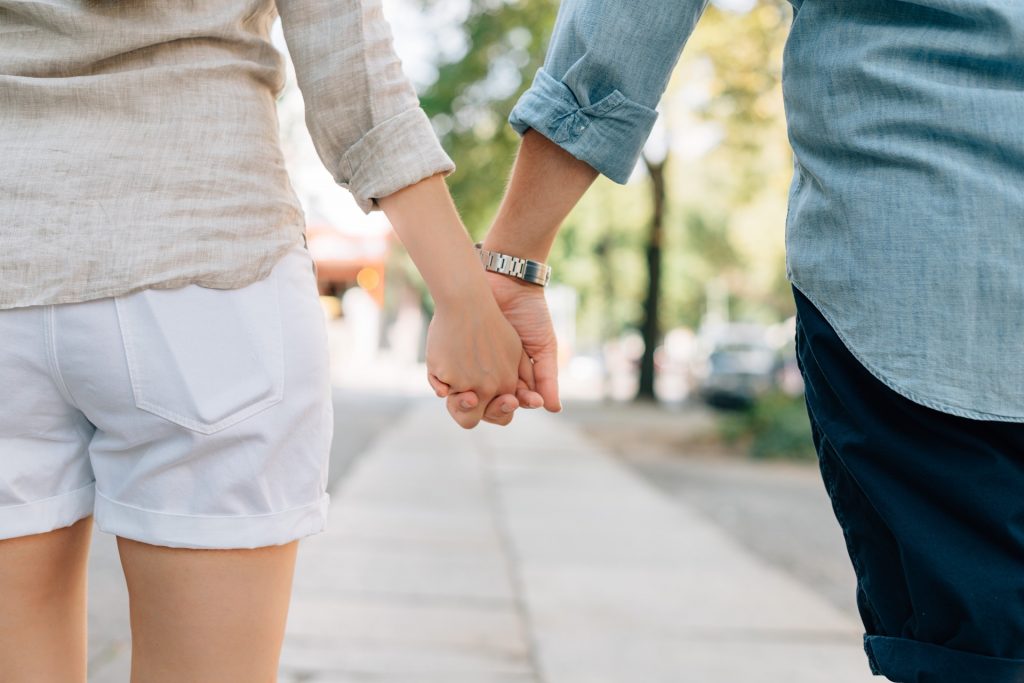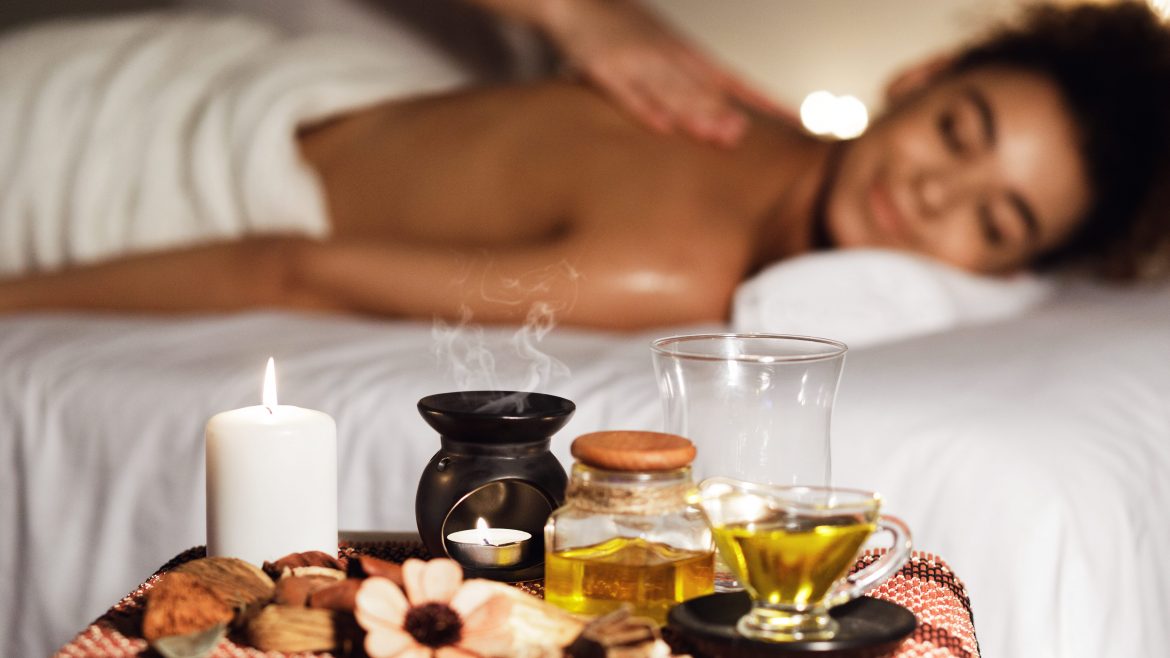Aromatherapy Massage: A Quick Guide (PART 1)
Massage is said to be one of the most important methods of applying essential oils.
However, in my experience I’ve found that not many people know about it (or know much about it).
In fact, I think massage is fairly underrated as a use for essential oils and as a method of healing and relaxation, perhaps because it’s not that common.
Why is this the case?
Author Jane Buckle says that “touch is rarely included in nursing, medical, or other health trainings, [because] so many health professionals do not know how to touch their patients and do not have the time, money, or inclination to take a massage therapy training course.”[1]
This is unfortunate because touch is so beneficial for us. And people often forget this.
For these reasons, I thought it useful to spend some time talking about the “aromatherapy massage”.
What is massage?
Massage is the “manual manipulation of the soft tissues of the body for therapeutic purposes, using strokes that include gliding, kneading, pressing, tapping and/or vibrating.”[2]

The first written records of massage date back to China more than 4000 years ago; there is evidence that it was used in Ancient Egypt as well. Hippocrates, the founder of modern medicine, wrote “the physician must be experienced in many things, but most assuredly in rubbing’.
It is still used today, though it has definitely been overshadowed by modern medicine, partly because it hasn’t completely met the standards of evidence required in today’s world.
Nevertheless, the benefits of touch have long been recognized.
The Importance of Touch
Touch is a fundamental human need; its importance for mental and physical health has been well researched[3]. Touch is also fundamental to the development of a healthy human being; touch deprivation in the early stages of life has been known to inhibit the emotional and physical growth of children[4].
However, this need does not disappear as we grow older. Whether we realize it or not, we all need touch. We need it because it connects us together as human beings.
Physical touch is said to release oxytocin, a hormone that fosters relationship growth and closeness, and enhances a sense of trust and attachment[5]. This is true as much for the person giving the massage as the one receiving it.[6]

Touch is, in a sense, intimate, because it involves a connection between two people that is not frequently shared. Think about it, how many people are you comfortable with touching or being touched by? Probably not many.
Interestingly, this intimacy is exactly what makes massage so effective; the connection that is built through massage helps the person receiving it feel safe enough to relax and unwind, which contributes much to the “healing” effects of massage.
That’s right: the benefits of massage are both physical and psychological.
What are the benefits of massage?
Research indicates that massage can have the following benefits[7]:
- Inducing deep relaxation, relieving mental and physical fatigue
- Releasing chronic neck and shoulder tension and backache
- Improving circulation to muscles, reducing inflammation and pain
- Relieving neuralgic, arthritic and rheumatic conditions
- Helping sprains, fractures, breaks and dislocations heal more quickly
- Promoting correct posture and helping improve mobility
- Improving, directly or indirectly, the function of every internal organ
- Improving digestion, assimilation and elimination
- Increasing the ability of the kidneys to function efficiently
- Stimulating the lymphatic system to eliminate toxins
- Helping to disperse many types of headache
- Helping to release suppressed feelings, which can be shared in a safe setting.
[1] Buckle, Jane. Clinical Aromatherapy. 3rd ed., Churchill Livingstone, 2003. p. 117
[2] Lis-Balchin, Maria. Aromatherapy Science: A Guide for Healthcare Professionals. Pharmaceutical Press, 2006. P. 20
[3] See (Battaglia, Salvatore. The Complete Guide to Aromatherapy. The International Centre of Holistic Aromatherapy, 2003.) P.368 for cited studies
[4] Lacroix, Nitya, and Sharon Seiger. The Book of Massage & Aromatherapy. Lorenz Books, 2002. p. 40
[5] Chillot, Rick. “The Power of Touch.” Psychology Today, Sussex Publishers, 11 Mar. 2013, www.psychologytoday.com/ca/articles/201303/the-power-touch.
[6]Ibid.
[7] Battaglia, Salvatore. The Complete Guide to Aromatherapy. The International Centre of Holistic Aromatherapy, 2003. P.368

